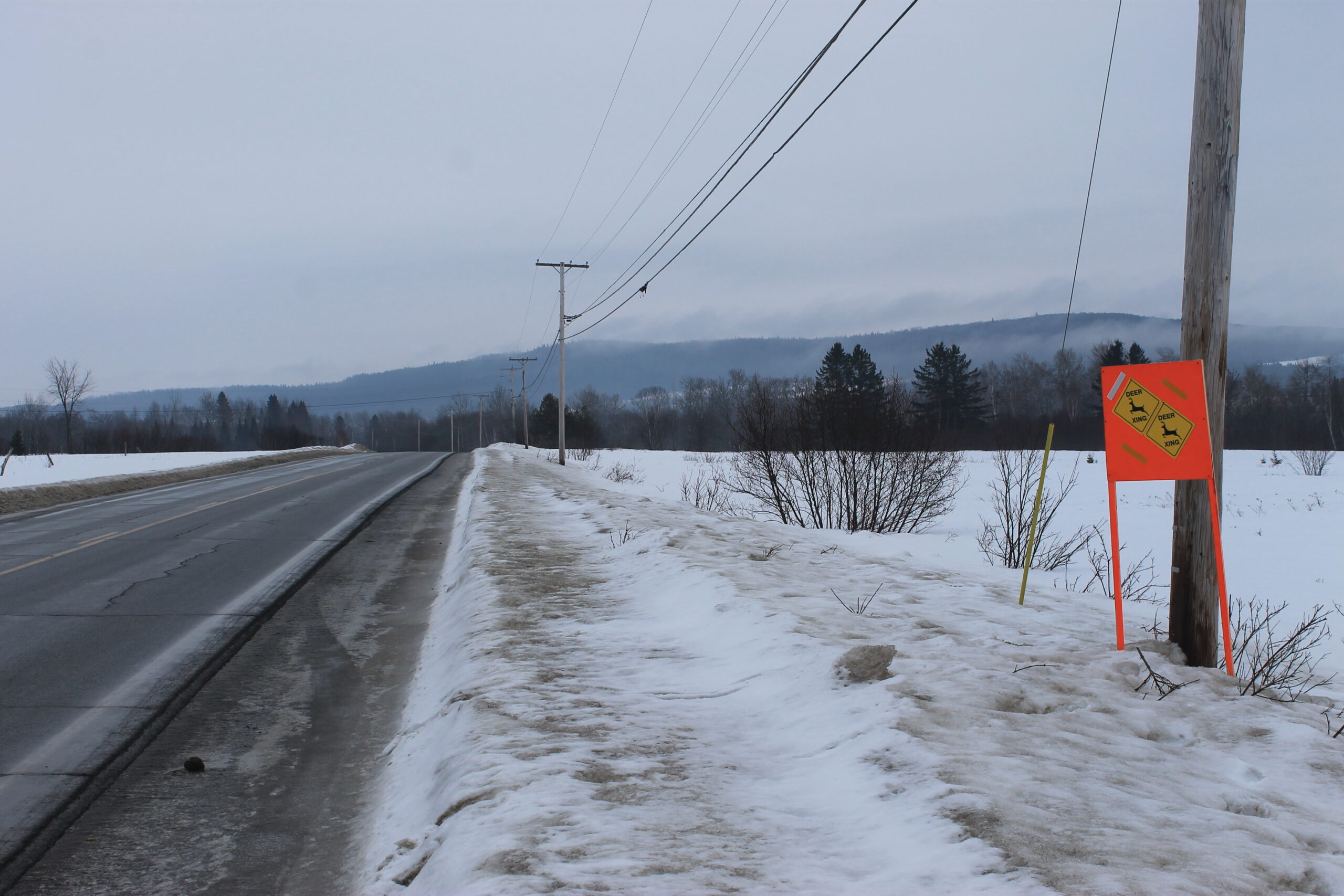
WASHBURN, Maine — Vehicle crashes with deer have quadrupled in Aroostook County in the last five years as the animal’s population has grown in its northern range, according to Shawn Haskell, regional wildlife biologist with Maine Inland Fisheries and Wildlife.
Last winter a feeding operation in an area around the Allagash contributed to 100 deer crashes with logging trucks, Haskell said. He said the feeding has since been moved and no longer poses a road hazard.
“We’re doing everything we can to keep deer away from the roads. Deer numbers have swelled and more often spend their winters in towns where there are roads and cars.”
The deer population is growing due to reduced coyote predation, supplemental feeding and “relatively mild winters,” Haskell said. IF&W has paid hunters and trappers to kill coyotes that prey on deer and Aroostook County hasn’t seen a “killer winter” in 10 years.
Haskell said IF&W has worked to educate people who are feeding deer in locations that can pose traffic hazards and has stepped in to stop feeding operations 8 times in the last few years.
Scott Fitzgerald of Washburn said he often passes dozens of deer near the Washburn Road in the village of Crouseville.
In November, Fitzgerald and his wife crashed into a deer in their new car, costing thousands in repairs.
Some homeowners in the area have been feeding deer over the last several winters and this year attracted dozens of deer with feed such as oats.
“They were so fat they couldn’t get over the guard rails,” Fitzgerald said of the dozen or so deer he passed on President’s Day afternoon.
“Absolutely, there are more deer this year,” he said of the numbers this season.
Fitzgerald said he and others have expressed concerns with the town about road safety due to the deer, especially along portions of the Washburn Road where there are hills and reduced visibility.
Washburn Police Chief Robert Thibeault said his department saw three deer-related crashes in January and five in February, all on that same road in Crouseville. Thibeault, in his first winter on the job, said It’s not clear if there are more or less deer-related crashes this year than in others.
Haskell said he spoke with the Washburn homeowners and that they’ve moved their feeding far from the road around a long-standing natural deer yard.
Haskell said the feeding area was located on the northeast side of the road, and that the animals likely didn’t congregate in the road frequently, although he said that some may have crossed when a coyote entered the area in January.
According to an IFW fact sheet, people concerned about the welfare of deer should “let them fend for themselves.” However, property owners around the state continue to feed deer in winter.
Under state game law, it is illegal to feed deer between June 1 and Dec. 15. Maine residents can, however, raise red-tailed deer for meat in enclosed pastures under state regulations.
White-tailed deer are at the northern extent of their range in Maine and particularly Aroostook County, and feeding them can adversely affect the health of their populations, according to IF&W.
“Feeding deer in late fall may disrupt deer migration to natural wintering areas,” according to the IF&W fact sheet. That can lead to deer congregating in smaller areas, leading them to overbrowse natural vegetation, render them dependent on supplemental feeding and increase disease transmission.
Deer are adapted to eat woody browse during the winter and rely on body fat for as much as 40 percent of their nutritional needs, according to the IFW fact sheet.
“Offering food items during this period other than woody browse requires different microorganisms in the stomach to complete digestion, thus potentially starving a deer by feeding it or causing other feeding illnesses,” the department said.
Most people feeding deer in the winter use oats, Haskell said. In some places, the deer have over-browsed their natural winter foods such as hardwood trees.
In many of the areas where the deer are concentrated, there is nothing left to eat, Haskell said. “When they run out of hardwoods and tree litter, they turn to bark and conifers.”
Fitzgerald said he’s worried about the risk overcrowding deer can pose to their own populations and to humans. A Marine veteran, he trained in Parris Island, S.C., when the island’s deer population surged and then suffered high rates of disease.
“Eventually, those deer are going to share diseases, ticks, everything else. The gene pools are going to get shallower. They’re not going to be able to get their own food.”





